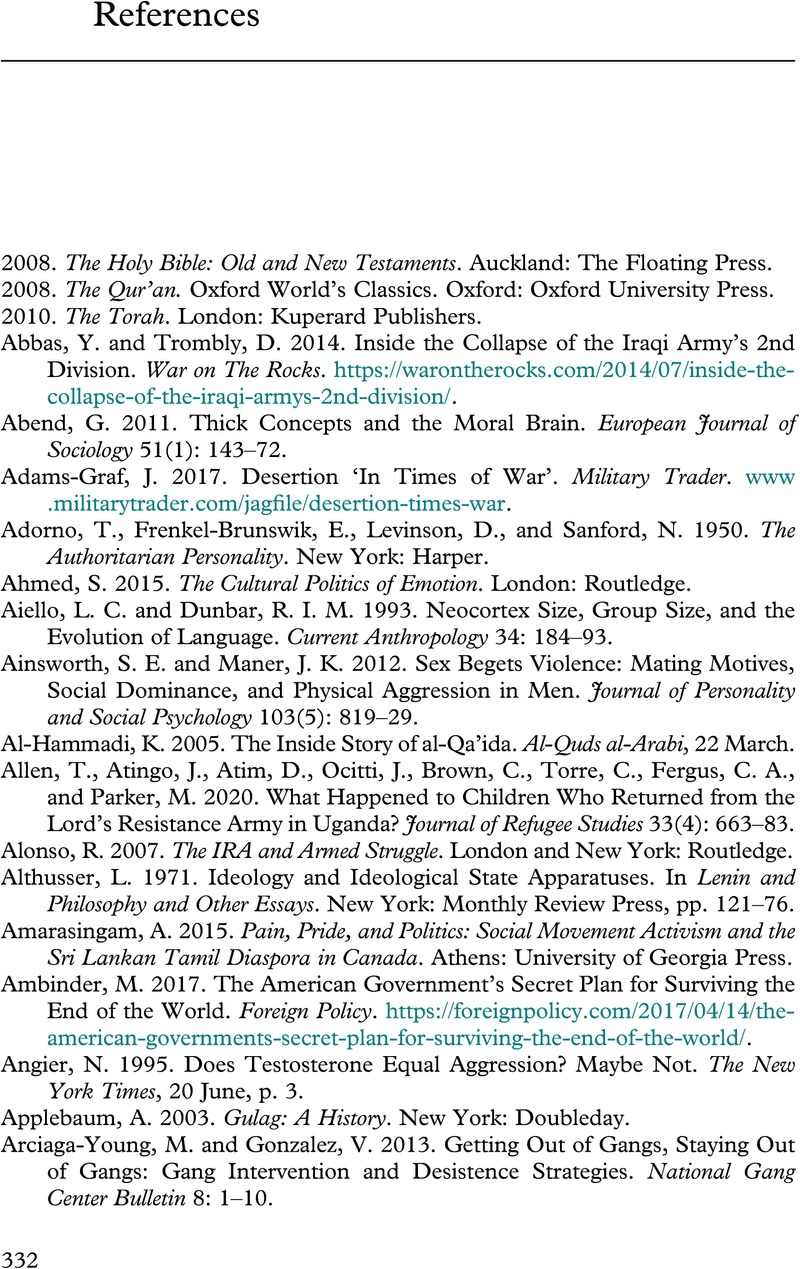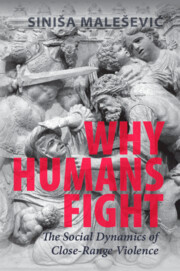Book contents
- Why Humans Fight
- Why Humans Fight
- Copyright page
- Dedication
- Contents
- Acknowledgements
- Introduction
- 1 The Body and the Mind
- 2 Profiting from Fighting
- 3 Clashing Beliefs
- 4 Enforced Fighting
- 5 Fighting for Others
- 6 Avoiding Violence
- 7 Social Pugnacity in the Combat Zone
- 8 Organisational Power and Social Cohesion on the Battlefield
- 9 Emotions and Close-Range Fighting
- 10 Killing in War
- 11 The Future of Close-Range Violence
- Conclusion
- Appendix Methodology and Data Collection
- References
- Index
- References
References
Published online by Cambridge University Press: 29 September 2022
- Why Humans Fight
- Why Humans Fight
- Copyright page
- Dedication
- Contents
- Acknowledgements
- Introduction
- 1 The Body and the Mind
- 2 Profiting from Fighting
- 3 Clashing Beliefs
- 4 Enforced Fighting
- 5 Fighting for Others
- 6 Avoiding Violence
- 7 Social Pugnacity in the Combat Zone
- 8 Organisational Power and Social Cohesion on the Battlefield
- 9 Emotions and Close-Range Fighting
- 10 Killing in War
- 11 The Future of Close-Range Violence
- Conclusion
- Appendix Methodology and Data Collection
- References
- Index
- References
Summary

- Type
- Chapter
- Information
- Why Humans FightThe Social Dynamics of Close-Range Violence, pp. 332 - 362Publisher: Cambridge University PressPrint publication year: 2022

